Everest: Queues, Theft and Death on the Mountain Once Known as Chomolungma
Everest does not exist as it did a century ago. We have changed the way it is perceived, and should take responsibility for its numerous and consistent casualties.

Everest is one of the most sacred mountains in the world, appropriately named “Holy Mother” by the people of Tibet and “goddess of the sky” by the Nepalese. The surrounding valleys permeate spiritual energy that is attested to by all the native Sherpas living near the hallowed mountain. In its indigenous context, the summit of Mount Everest is a heavenly place that humans should revere in awe at its base, envisioning the gods dancing at 8,000 meters.
The cultural significance of Everest has strayed ever since its summit was first pursued. From that point on it became known as ‘Everest,’ after a British surveyor, rather than Chomolungma, its native Tibetan name, or Sagarmatha in Sanskrit. This misappropriation in its designation is altogether too fitting to how that mountain is still pursued today.
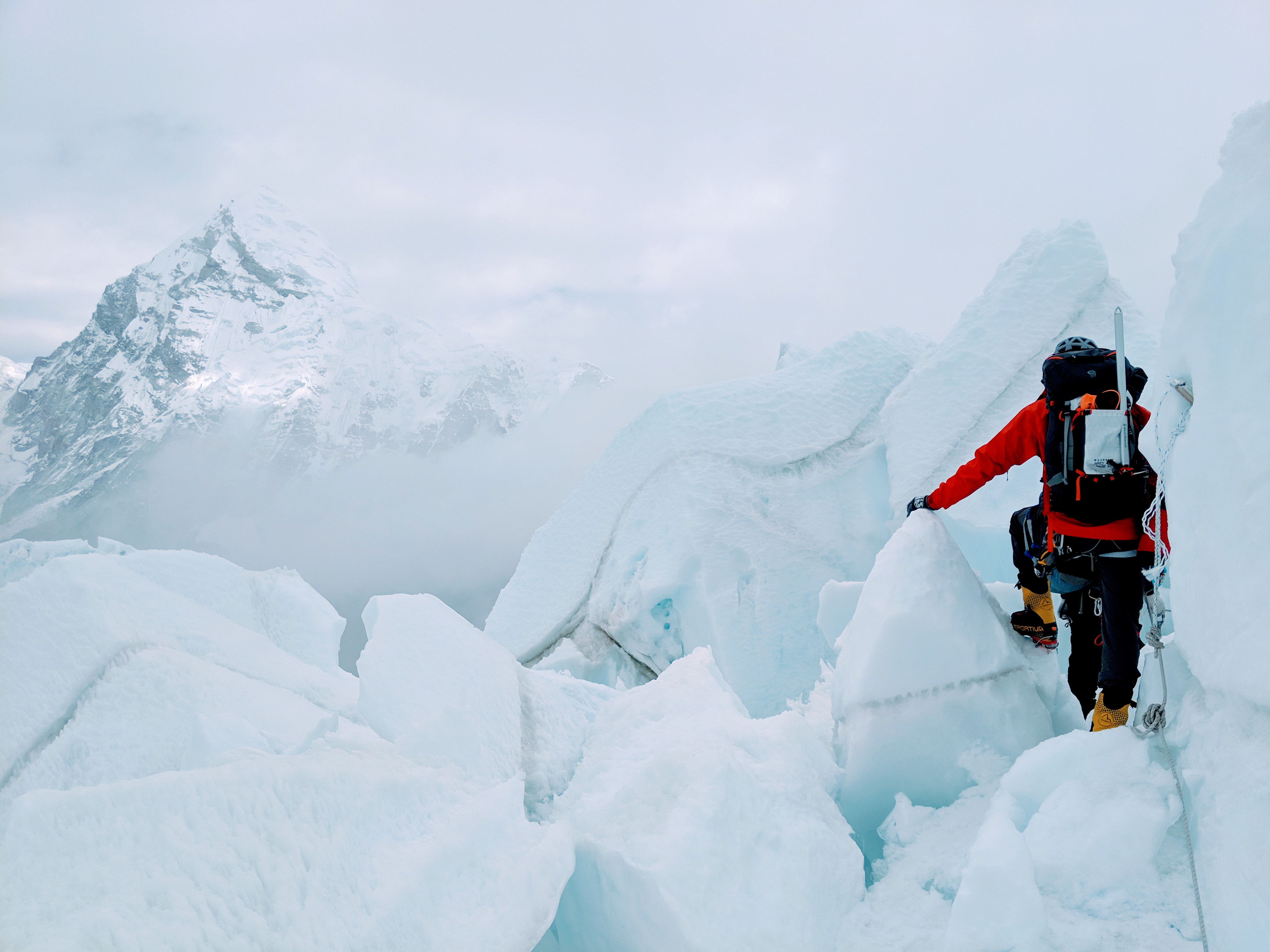
Every year, there are now masses of non-native tourists hiring sherpas to guide them to the covetous summit. For the most part, their intent is not to respect and experience the sanctity of the mountain, but rather to stand atop it, to "conquer" it, without consideration of its authentic nature. The crescendo of the consequences is playing out in real-time, this crescendo has been building for the past couple of decades. As a result of this naïveté, many Westerners have attempted Everest only to never return. Once again, as happens every year as the summit window opens up, the press is fixating on the sensational photos of queues stretching down the mountain.
“There were people who should not have been on that mountain”
While traffic jams are undeniably an issue, they are not inherently causing the numerous deaths that have occurred on Everest according to Thomas Becker, who summited Everest on May 23rd, 2019. Becker instead points to the limited three possible days to summit this year, as opposed to eleven last year, as well as the number of people who are simply too inexperienced to attempt a summit.

Thomas Becker is an American human rights attorney based primarily in Bolivia and he has had experience with intensive mountaineering over the past twenty years of his life. He currently lives in La Paz, Bolivia, which sits at a little more than 3,500m, making access to peaks exceeding 6,000m less complicated. Before targeting the peak of Everest, which sits at 8,848m, Thomas' highest summit was Pik Lenin at 7,134m along the Tajikistan-Kyrgyzstan border. Even with his extensive mountaineering experience, Becker saw that something was awry on Mount Everest.
“There were people who should not have been on that mountain,” Becker said, “I love that everyone wants to do it… but I want them to be prepared”.
“It only takes one person to hold sixty people back for two hours,”
With the astronomical cost of permits to summit Everest, those climbing are increasingly skewed towards those with the money to do so, rather than those who hold pure intentions and sufficient experience. Selfies atop one of the world’s most spiritually exalted peaks have been taking priority over the experience of a two-month-long collective struggle. This year 381 permits were issued to climbers, exceeding $10,000 per permit. Last year, 347 permits were issued. These numbers are not significantly different, perhaps illustrating Becker's point. Inexperience has caused complications on the mountain, rather than just clusters of climbers headed toward the summit.
https://www.outdoorjournal.com/climbing-2/the-psychology-of-summiting-everest/
“It only takes one person to hold sixty people back for two hours,” Becker said. “If you removed the inexperienced people from the mountain, those lines become much quicker.” The lack of experience Thomas witnessed brought the worst out in many of the other climbers and presented an incredibly dangerous setting for those trying to summit, including Becker himself.
Elia Saikaly is a filmographer who has spent the last several years of his life documenting the country of Nepal, and this year summited Everest for the third time. He spent this year’s trek documenting four Arab women heading toward the penultimate summit, including the first Omani woman ever to complete the expedition.
[embed]https://www.outdoorjournal.com/featured/expedition/dreams-come-true-everest-arab-women/[/embed]
“There were four deceased climbers on the route on the 22nd/23rd of May, either directly fixed to the lines at an anchor point or just mere feet off the main trail,” Saikaly said. “ I do believe that had other climbers exercised such humility and honesty with themselves, most deaths could have been avoided.”
“Someone stole our oxygen in the death zone,”
“I trained for a year to make sure - could I do this on my own?” Becker said, outlining his fear of being a burden to those climbing with him, and hoping to be ready for any off-chance worse case scenarios. Saikaly similarly delineated the success of his team in terms of preparation. “I think of our own team members,” Saikaly said. “The four Arab women who all summited without issues, who were able to navigate the queues and ascend and descend safely; where did they go right? Leadership. Preparation. Strategic planning and self-responsibility.”
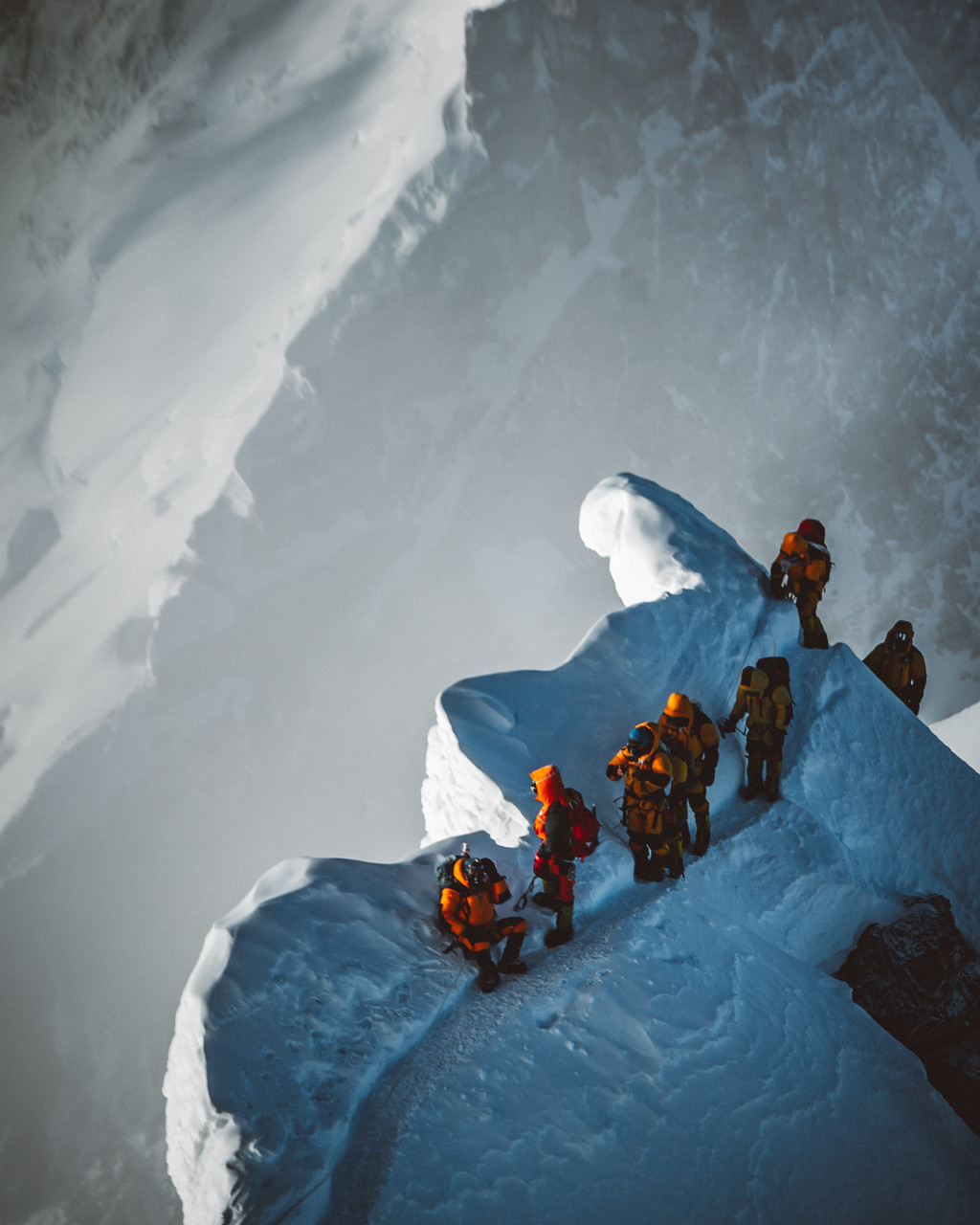
As is possible for anyone upon Everest, nearly everything that could have gone wrong went wrong for Becker.
“Someone stole our oxygen in the death zone,” Becker said. The death zone is the area of the mountain above 8,000 meters (26,000 feet) where the oxygen level is so low that the body’s vital functions begin to slow. With the stagnant queues that have been forming before the summit, this area becomes even more precarious as climbers are forced to remain in the death zone for long stretches of time. Especially without oxygen, the body will begin to suffer; Becker obtained both frostbite and frost-blindness with the lack of oxygen and a broken oxygen regulator along his way to the summit in this zone. “With such limited oxygen, it put me in a dangerous situation, which contributed to my frostbite.”
"How you summit, in my opinion, is more important than the fact that you reach the top"
Becker was in dire conditions upon making his way back down from the summit. Due to his frost-blindness, he was forced to descend blindly from Camp 4 which is located just below the death zone. It was not until he reached Camp 3 that a popular Everest guiding company, Adventure Consultants, was able to aid him by bandaging his eyes. A few of his fingers, however, were in worse shape. Frostbitten, he had to remain in Nepal for some time after completing his total descent to ensure he did not lose any appendages.
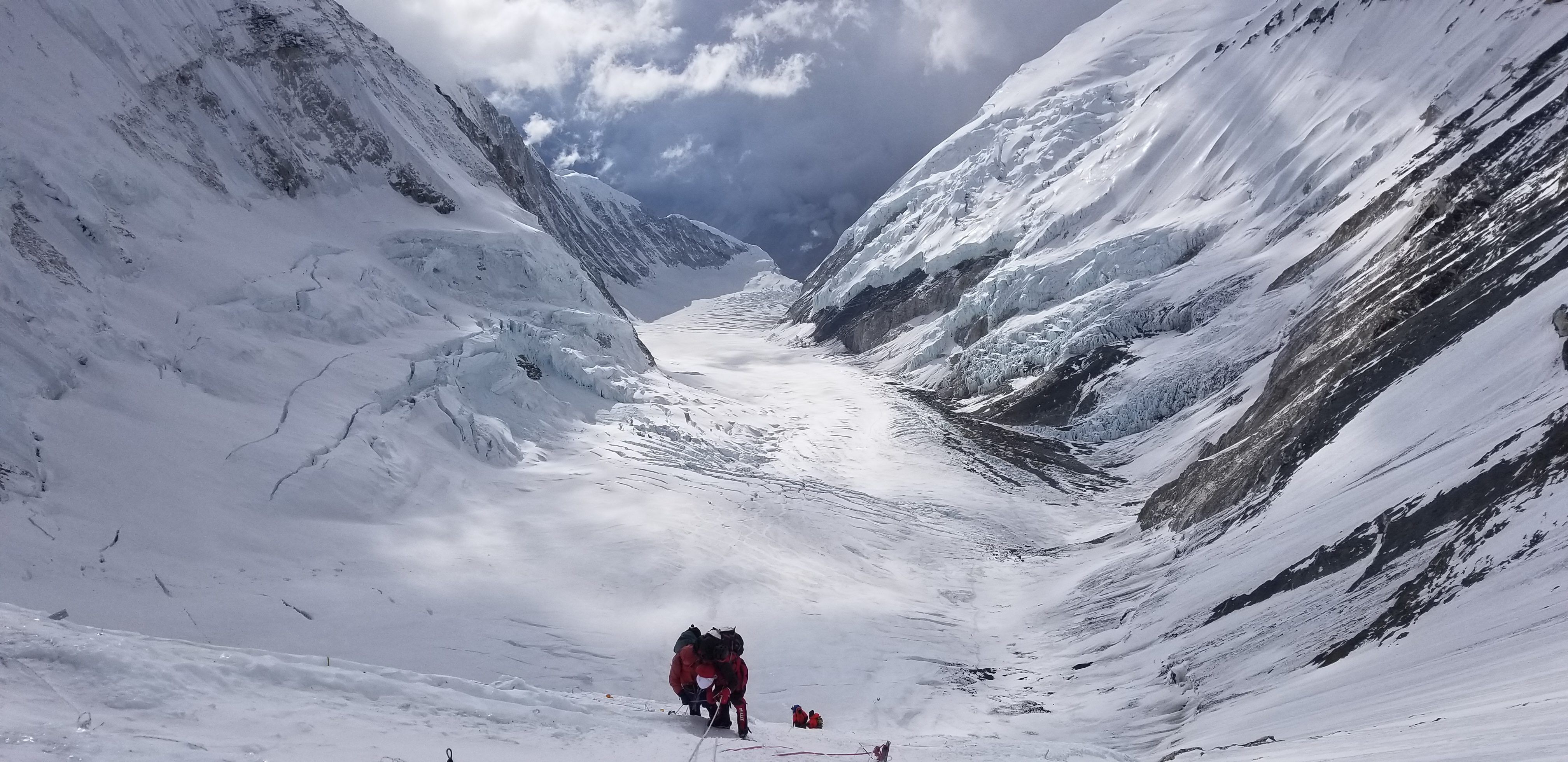
These risky queues could be made far more effective if the people on them were properly equipped. In these lines, climbers are attached to a single rope that leads them up towards the summit. This year, due to the sheer number of people who would be attempting to summit in a limited amount of days, there was one rope that ascended to the peak, and another that descended from it. However, the ascending rope still often suffered stoppages, as an inexperienced climber would become stuck at some of the more technical aspects of the mountain.
“The ambition of some people was the sad part”
Becker was forced to face one of these dilemmas in the worst place possible, with dwindling oxygen. “I was teaching a woman how to use a jumar near the summit,” Becker said. Jumars are an ascending device that allows climbers to climb along strategically placed ropes rather than negotiate steep rocks. One of these such areas would be the Hillary Step near the summit, a practically vertical rock face at nearly 8,800 meters.

Suffice to say, it is the last place in the world a climber should be learning how to use any crucial climbing device. Becker further described the chaos the situation created, as climbers behind the struggling woman began yelling at her, only further escalating the tension that they were all under. “The ambition of some people was the sad part,” Becker said, “This Darwinistic, ‘must conquer at all costs’ mindset put people in danger.” He was patient with her, attempting to voice words of encouragement over the sea of impeding attitudes. If she were to detach from the rope, as some climbers were suggesting, she risked falling off the face of the mountain. With his help, she was eventually able to make her way along to the summit.
Saikaly himself once abandoned a summit attempt in the face of harsh conditions. Fitting, he posited that summiting Everest should be done properly. “How you summit, in my opinion, is more important than the fact that you reach the top,” Saikaly said.
Lately, headlines regarding the perilous situations facing climbers on Mount Everest have revolved around the images of the elongated lines of people making their way to and from the summit. Over the past several climbing seasons, media outlets critique the Nepalese government for issuing too many permits. However, the focus for reformation should be to ensure the climbers are experienced, both technically and emotionally. Ambition in the wrong circumstances can be just as dangerous on Everest as inexperience. “Everyone wants to talk about the sharks,” Becker said, referring to overly-ambitious climbers, “and there definitely were sharks. But there were also experienced climbers.”
https://www.youtube.com/watch?v=Bchx0mS7XOY
Everest is an inherently challenging climb and has been pinned with casualties for decades. Much can be done to protect the people who do decide to undergo this challenging climb, which can take two months to complete and poses a real threat of death. The spirituality that is supposed to be evoked from the mountain can turn nightmarish by the sight of dead bodies lying abandoned.
“We saw dead bodies attached to ropes,” Becker said, describing his nearly one month and a half long journey travelling up the mountain. “There was a dead body basically dangling from the Hillary Step. I tried to stay pumped seeing it [the Hillary Step], but it was hard to do that walking past a dead person on this iconic part of the mountain.”
“I saw someone’s sherpa carrying an oriental rug and artwork to base camp.”
The sight of dead bodies combined with the behavior of other climbers, which only seemed to beckon for a fatal incident to occur, gave Becker pause when considering if he would attempt the mountain again. “The mountain’s magnificent,” Becker said, “but there are other mountains all over the world. I’ve never been on a trek where I had to pass six bodies. They could have been my friends, they could have been me.”
Although the Nepalese Government continues to receive sharp criticism, their own people are making an income off of Westerns attempting Everest. It is a hazardous living, but it is one of the more stable sources of income for sherpas in a meagre economy. “Everyone pays a permit fee, and usually a poor Nepali is the one that carries all your gear onto the mountain,” Becker said. While the deaths are far more often of Westerners than of sherpas, they are still dying as well and have to deal with the fact that there are dead bodies on one of their most sacred mountains. “The people who bear the brunt are sherpas, who are literally carrying bodies down,” Becker said.
The coverage in the West, that tends to focus on blaming the government rather than focusing on individual triumphs upon Everest, lies in stark contrast to media abroad. “Sensationalism sells, and the vast majority of positive accomplishments on Everest are overlooked by the western mainstream media,” Saikaly said. “The team of four Arab women each received a great deal of positive recognition in the media in their home countries.”
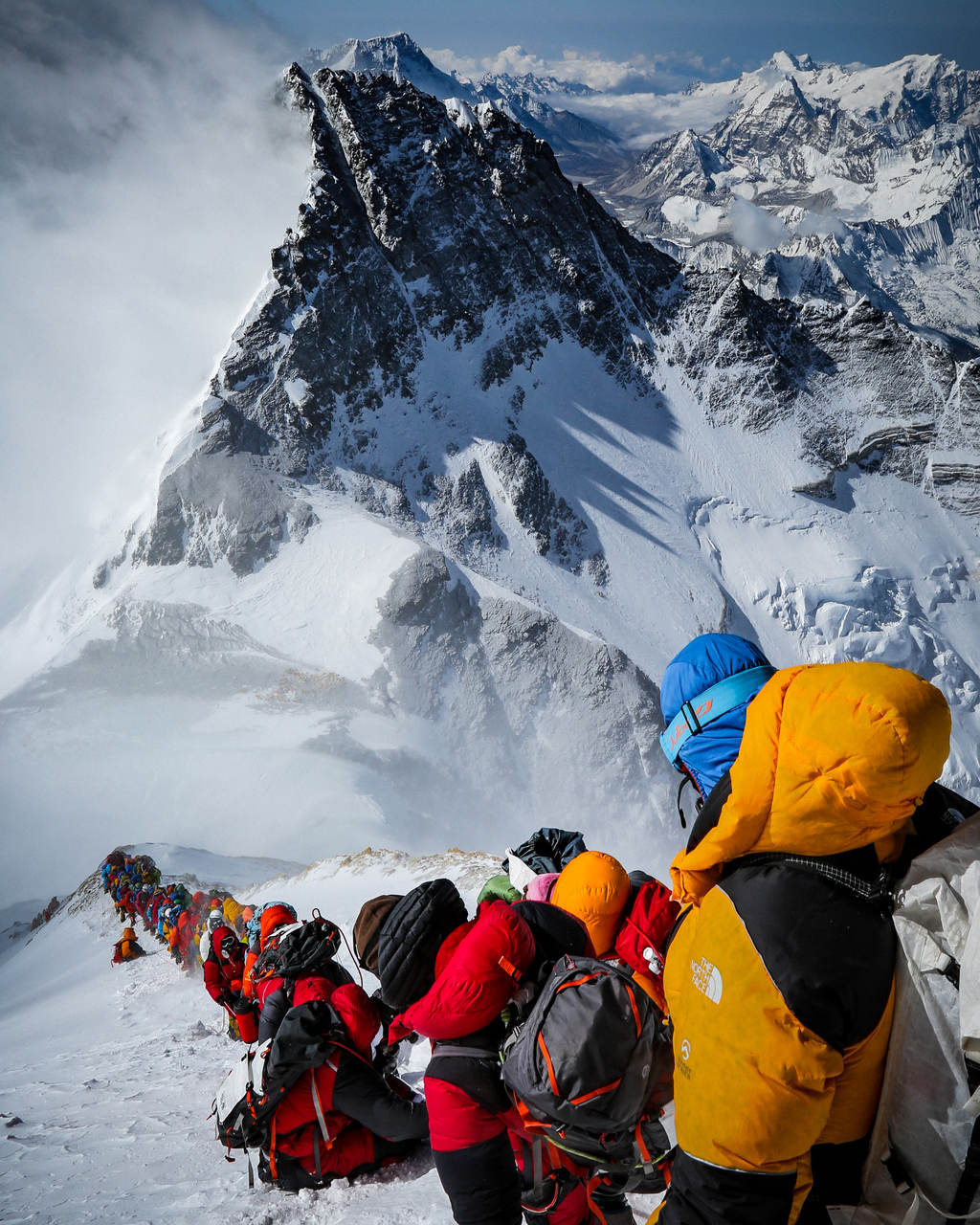
The situation, especially in historical context, is a tragic one. For the most part, wealthy Westerners hoping to summit Everest travel to the Himalayas for that sole purpose, without much regard to the social and economic status of the sherpas they hire to support them. “I tried to push myself, not to be a burden to anyone else,” Becker said, “I saw someone’s sherpa carrying an oriental rug and artwork to base camp.” Increasingly, these people are being exploited, and since they do not have a prominent voice, Western media is able to easily place blame upon their government for the painful occurrences that consistently take place on it.

A harkening back to the spirituality of Chomolungma, Everest’s native name that had been revered for centuries, may aid all those who choose to stand in its shadow. Yet this seems unlikely, due to the sheer amount of money pouring in from outsiders who want to stand atop the literal peak of the world.
Becker suggested regulations that could be put into place to restrict those without the proper experience from attempting the climb, such as ensuring that climbers who have not climbed to at least 7,000m could not attempt Everest. “Perhaps it is experience on a higher altitude 7,000m or 8,000m peak,” Becker said, “or maybe it is training on technical 6000m mountains… This would weed out some of the people that I saw on the mountain that lacked some pretty basic skills and hopefully encourage them to get the training to keep themselves and others around them safe.” This, unfortunately, seems unlikely again due to the sheer influx of money coming into a country in need of the income and an industry that is willing to compromise the ethical values that mountain previously enjoyed before it was westernized.
Without the appreciation of Everest that it enjoyed from those indigenous to its land, we may be destined to see the same type of media coverage on the issues plaguing it each year, as the summit window opens for tourists to rabidly rush to its peak.
With thanks to Elia Saikaly and Thomas Becker for contributing. Elia can be found on Instagram here, and more details about his upcoming feature documentary "The Dream of Everest" here. Thomas can be found on Instagram here.
Introducing The Outdoor Voyage
Whilst you’re here, given you believe in our mission, we would love to introduce you to The Outdoor Voyage - our booking platform and an online marketplace which only lists good operators, who care for sustainability, the environment and immersive, authentic experiences. All listed prices are agreed directly with the operator, and we promise that 86% of any money spent ends up supporting the local community that you’re visiting. Click the image below to find out more.





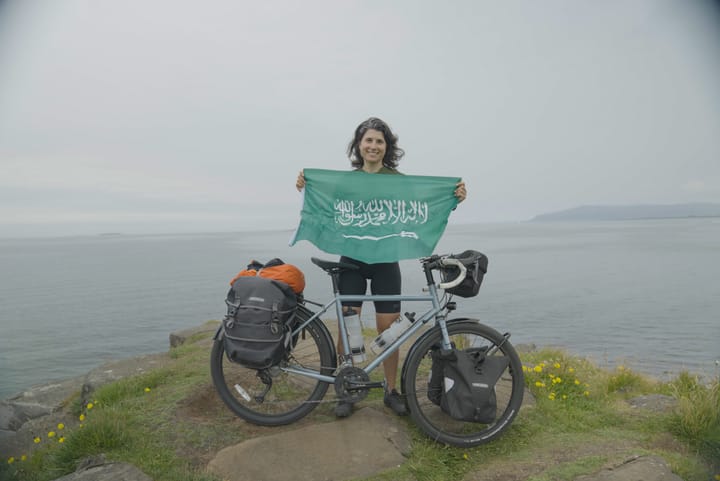
Comments ()